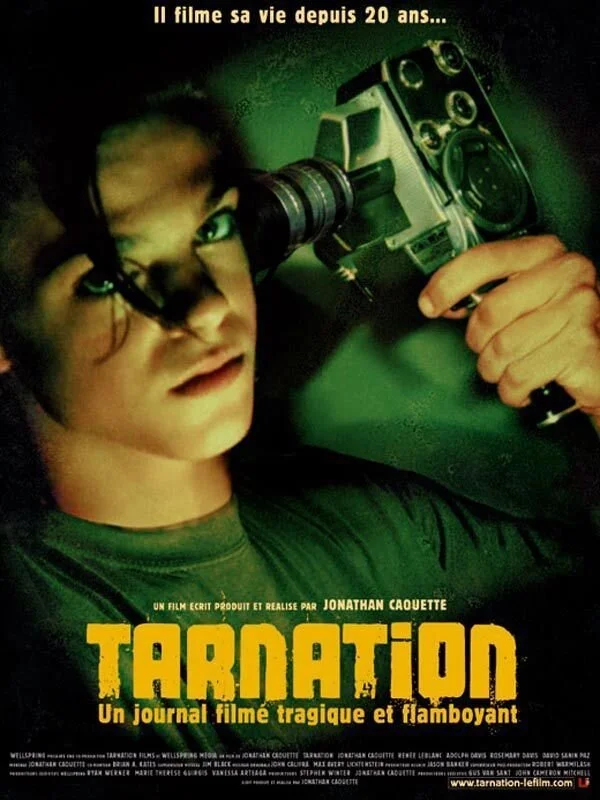TARNATION: A DIY legend
Rating: ⧳⧳⧳⧳
[TRAILER]
Jonathan Colette filmed his own artistic process for 20 years and collaged his videos into a documentary illustrating his memories. I randomly watched Tarnation during QFest Houston at the Rice Cinema Center and I’m still thinking about the soundtrack and lo-fi footage the movie featured.
Essentially about mental health, Tarnation is also the story of a young queer boy from Houston, Texas growing up in the ’80’s and slowly pasting his past and future together through a horrible upbringing. His story starts with his mother’s shock treatment and illustrates (by his own editing) his mind unraveling, drugs, and psychosis. I think about Tarnation and the energy it gives you to go live life regardless of the cards you’re dealt.
I could tell you about how it was made on a $200 budget and got picked up by John Cameron Mitchell and Gus Van Sant or how messed up his life and family was, but really I’d like to talk about Tarnation’s technical assets and the DIY scene.
Tarnation was edited on iMovie years before indie bands (like WAVVES) started using GarageBand to record lo-fi home recordings. During an artist talk, Colette explained that he edited the movie in pieces, exporting sequences before iMovie would inevitably crash on his early 2000’s macbook pro. As painful as it is to watch the film at times, I can’t imagine what editing and digitizing the footage was like, a true labor of love!
Beyond the tedious labor of having to paste together sequences of the movie, the content is highly personable and an accumulation of secrets on film. Definitely working with present early 2000’s video camera effects, the film’s visuals have an early millennial time stamp with polarized filters and the infamous “Warhol.” Colette is a Gen X indie darling, so the film has a raw art/punk vibe coupled with underground fuzzy music. The actual editing of Tarnation abuses early editing effects but is also crisp and clean at times, really leaning into the beauty of the multiple format Super 8 Films, VHS, and early digital recordings.
Colette falls into the punk and gay scene in Houston, helping him bare the burden of living with his family history and dare to dream about making films. The soundtrack to the film is a time capsule, rich in moody-broody songs by the Cocteau twins, Magnetic Fields, and Red House Painters (check out the soundtrack list here).
Throughout the film, Colette never complains or is even phased by the idea that he could cut the toxicity out of his life and blame the world. Instead, he gets a camera and records his best impression of a battered wife or make-believe characters, escaping into his own world. It’s such a heart-wrenching story, not for the faint at heart.

